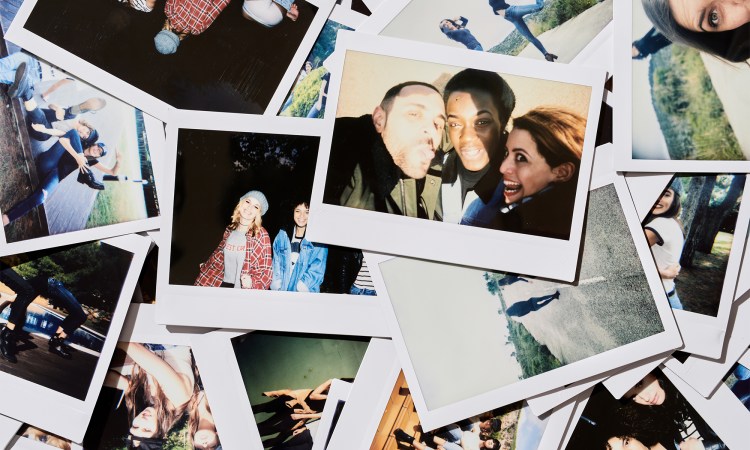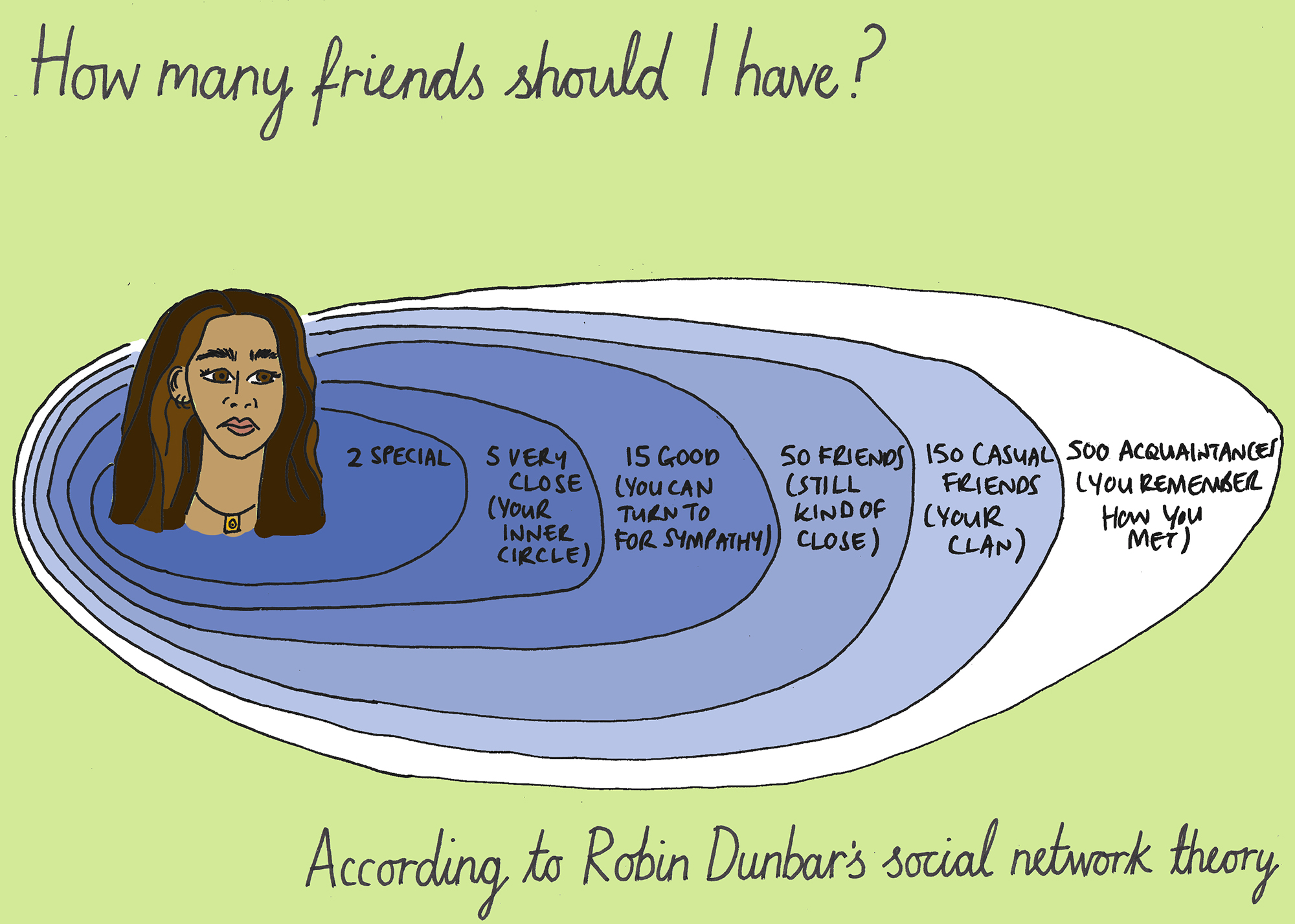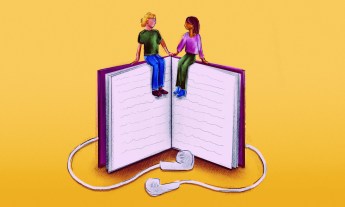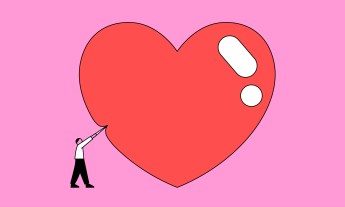
Going through a global pandemic has brought us together in some ways, but it’s also separated many of us from our routine interactions with friends and acquaintances. And in doing so, it’s led us to look at our relationships and reflect on the ones we’d like to add to our lives — and the ones we’ve left behind.
Voraciously curious data journalist Mona Chalabi has been thinking about her friendships too, and she recently explored this topic in her podcast Am I Normal?. Here’s an excerpt from that episode, where Chalabi speaks with renowned friendship researcher Robin Dunbar PhD, an evolutionary psychologist at Oxford University:
Mona Chalabi: According to Dunbar, our apple basket of relationships has an average of 150 people in it. This 150 figure is referred to as “Dunbar’s number“. Now it might seem high, but what Dunbar is looking at is the number of relationships the brain can handle at one time. This includes family, best friends, acquaintances, workmates, even the bartender you know by name. So they’re friends of a wide range of types.
Dunbar has studied social relationships since the ’70s, first in primates and then in humans. He developed the number while studying primates’ social networks. And that was when he noticed that the size of those social groups was relative to the size of the primates’ brains.
“Introverts prefer to have fewer friends,” says Dr. Dunbar. “They probably sort of hover around the 100 – 150 mark.”
Robin Dunbar: And so I just, out of idle curiosity, thought, “Well, what happens if we stick human brains into this equation?” And when we did that, it gave this figure of 150. And that number then just kept turning up all over the place.
Chalabi: The figure popped up in surprising places — offices, communes, even Christmas card lists. 150 is also the estimated size of Neolithic farming villages in the Middle East and 11th-century Britain … Dunbar says 150 for simplicity, but really, it’s a range between 100 and 250, depending on several factors.
Dunbar: One is obviously personality. So introverts prefer to have fewer friends. They probably sort of hover around the 100 – 150 mark …
Chalabi: Another factor is age.
Dunbar: The size of personal social networks over the lifespan increases as you grow through childhood, hits a peak somewhere in the late teens, early 20s at something approaching about 250. And then from about the 30s, surprisingly coinciding with reproduction, it drops to about 150 after which it remains very stable.

Chalabi: … You see, within that 100 – 250 friend range, there are layers or concentric circles. The first layer is about 1.5 people. That often represents your parents or your romantic partner.
Dunbar: Then the next layer out is somewhere around about 5 — we think of those as your intimate friends. The next layer out is 15 — those you might think of as best friends. Then there’s a layer at 50 — good friends. A layer at 150 — just friends. A layer at 500 — which we think of as acquaintances.
Chalabi: 50 good friends! Five-zero! That feels like a whole lot of people! And I think this is the tier where I’m having the most trouble.
… The more I think about it, part of the problem here might be that some of the people who were once part of that super-close friend group, maybe I just didn’t do enough to keep them there.
Dunbar: Certainly our research shows very clearly that if you fail to maintain that level of investment, friendships start to die slowly, but surely. Six months after you’ve not contacted them, they will have dropped down from being a good friend to maybe just a friend. And if it carries on for a couple of years, they will end up as an acquaintance.
Want to learn more? In her TED podcast Am I Normal?, data journalist, writer and illustrator Mona Chalabi dives into the numbers to get us answers to some of the most puzzling questions — like just how long does it take to get over a breakup and how bad is it to marry a cousin. But since statistics can’t tell the whole story, she also talks with experts, strangers and even her mother. Go here to listen to the irresistible episodes now.
You can also watch this TED original video with Mona Chalabi here:











